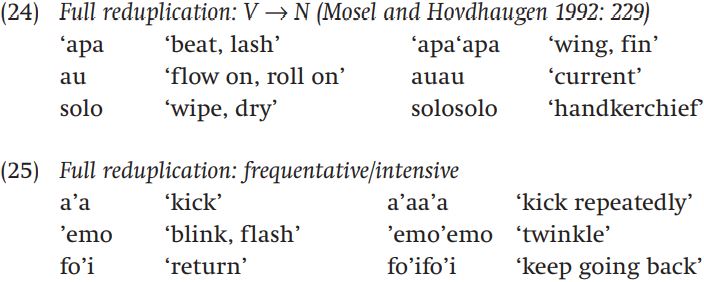x

هدف البحث
بحث في العناوين
بحث في المحتوى
بحث في اسماء الكتب
بحث في اسماء المؤلفين

اختر القسم
موافق


Grammar


Tenses


Present

Present Simple

Present Continuous

Present Perfect

Present Perfect Continuous


Past

Past Continuous

Past Perfect

Past Perfect Continuous

Past Simple


Future

Future Simple

Future Continuous

Future Perfect

Future Perfect Continuous

Passive and Active


Parts Of Speech


Nouns

Countable and uncountable nouns

Verbal nouns

Singular and Plural nouns

Proper nouns

Nouns gender

Nouns definition

Concrete nouns

Abstract nouns

Common nouns

Collective nouns

Definition Of Nouns


Verbs

Stative and dynamic verbs

Finite and nonfinite verbs

To be verbs

Transitive and intransitive verbs

Auxiliary verbs

Modal verbs

Regular and irregular verbs

Action verbs


Adverbs

Relative adverbs

Interrogative adverbs

Adverbs of time

Adverbs of place

Adverbs of reason

Adverbs of quantity

Adverbs of manner

Adverbs of frequency

Adverbs of affirmation


Adjectives

Quantitative adjective

Proper adjective

Possessive adjective

Numeral adjective

Interrogative adjective

Distributive adjective

Descriptive adjective

Demonstrative adjective


Pronouns

Subject pronoun

Relative pronoun

Reflexive pronoun

Reciprocal pronoun

Possessive pronoun

Personal pronoun

Interrogative pronoun

Indefinite pronoun

Emphatic pronoun

Distributive pronoun

Demonstrative pronoun


Pre Position


Preposition by function

Time preposition

Reason preposition

Possession preposition

Place preposition

Phrases preposition

Origin preposition

Measure preposition

Direction preposition

Contrast preposition

Agent preposition


Preposition by construction

Simple preposition

Phrase preposition

Double preposition

Compound preposition


Conjunctions

Subordinating conjunction

Correlative conjunction

Coordinating conjunction

Conjunctive adverbs


Interjections

Express calling interjection


Grammar Rules

Preference

Requests and offers

wishes

Be used to

Some and any

Could have done

Describing people

Giving advices

Possession

Comparative and superlative

Giving Reason

Making Suggestions

Apologizing

Forming questions

Since and for

Directions

Obligation

Adverbials

invitation

Articles

Imaginary condition

Zero conditional

First conditional

Second conditional

Third conditional

Reported speech


Linguistics

Phonetics

Phonology


Semantics


Pragmatics

Linguistics fields

Syntax

Morphology

Semantics

pragmatics

History

Writing

Grammar


literature


Reading Comprehension

Elementary

Intermediate

Advanced
Samoan (Austronesian)
المؤلف:
Rochelle Lieber
المصدر:
Introducing Morphology
الجزء والصفحة:
125-7
22-1-2022
680
Samoan (Austronesian)
What makes Samoan an interesting contrast to Turkish and Mandarin is that it uses a wide variety of word formation processes without seeming to favor one over another. To pursue our mechanical metaphor, its toolbag is chock-full of different tools. In this language we can find prefixation, suffixation, and circumfixation, both partial and full reduplication, and also to some extent compounding. There’s also even a bit of internal stem change in the form of a morphological process of vowel lengthening. Here are some examples:

The prefix fa’a can be put on either verbs or nouns to make verbs meaning ‘cause X’ or ‘make X’ or ‘put X on’.

Although Mosel and Hovdhaugen say that prefixes are usually mutually exclusive – that is, there can only be one in a word – the circumfix fe- -a’i can occur outside the prefix fa’a-, as you see in the word in (19):

In addition to prefixes and circumfixes, Samoan can also form words by suffixation:

Suffixing -ga to a verb and lengthening the first vowel of the verb stem forms another kind of derived noun which can be concrete and often, according to Mosel and Hovdhaugen (1992: 195) has a flavor of plurality:

The vowel lengthening that occurs in this process can be considered a form of internal stem change.
Samoan is also rich in processes of reduplication, as we already saw in section 5.4. As we saw there, Samoan has a process of partial reduplication that forms verbs from nouns. To repeat example (10) from chapter 5:

Partial reduplication can also be used to make ergative verbs from nonergative verbs:

In both cases, partial reduplication copies the first consonant and vowel of the base.
New words are also formed in Samoan by full reduplication. We saw one example (9b) in section 5.4, which is repeated in (24), and another example is given in (25):

In (25) we see a process of full reduplication that takes verbs and makes them into frequentatives, that is, forms that mean ‘X repeatedly’, or intensives, forms that mean ‘X a lot’.
Finally, Samoan also has compounding, as the examples in (26) show:

These examples are all left-headed endocentric attributive compounds. As we can see, although compounding in Samoan is possible, this language has nowhere near the richness of compound types that can be found in Mandarin.
Interestingly, although Samoan sentences express case relations (ergative/absolutive) and clauses are marked for tense, aspect, and mood, Samoan has no inflectional paradigms (Mosel and Hovdhaugen 1992: 169). In fact. relations like case, tense, aspect, and mood are expressed by independent particles, rather than by prefixes, suffixes, or reduplication, in this language; hence most of our examples here have been derivational.